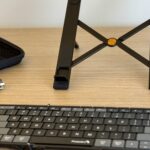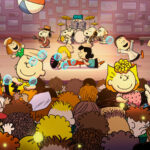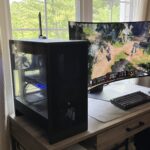Why you can trust TechRadar
We spend hours testing every product or service we review, so you can be sure you’re buying the best. Find out more about how we test.
Bravely Default Flying Fairy HD Remaster is a weird Nintendo Switch 2 launch title, something of a time capsule in every manner the phrase could imply. As a game, it’s stubbornly unchanged, and yet by being so familiar, it remains just as enjoyable as it was on its initial Nintendo 3DS release.
Review info
Platform reviewed: Nintendo Switch 2
Available on: Nintendo Switch 2
Release date: June 5, 2025
As the game’s producer Tomoya Asano noted ahead of this remaster’s release, Bravely Default was designed as a throwback to the classic 2D and 16-bit era of RPGs.
Its success both at home and abroad inspired the company to develop its HD-2D titles, such as Octopath Traveler and the Dragon Quest 3 HD-2D Remake. It emulates classic Final Fantasy with a grand globe-trotting adventure to save the world, wonderfully representative of the Nintendo Entertainment System and Super Nintendo Entertainment System eras of the storied franchise.
One day, a great chasm suddenly opens in the earth underneath the village of Norende, with Tiz the sole survivor. The four crystals driving the natural balance of the world have been plunged into darkness. When he runs into one of the Vestals (priestesses of the crystals), Agnes Oblige, he is inspired to protect her and seek a way to reawaken them. Over time, you are joined in your travels by Edea Lee and Ringabel, and these four warriors of light set out to rejuvenate the world.
This is a turn-based RPG, enhanced by a deep job system and much more. The result evolves this basic framework into something highly engaging and, even all these years later, wholly unique. The titular Brave and Default mechanics bring a fascinating risk-reward thrill to difficult combat: you begin with 0 BP in each battle, with any action consuming one point. You can act multiple times in a single term by using Brave, consuming extra BP, but you’ll be unable to act again until you recover to at least zero.
Default is this game’s term for defending: you won’t act, but you’ll gain an extra BP and take less damage, allowing you to act twice next time without skipping a turn. By building up BP across multiple characters and tying it to special moves it allows for some intense all-out attacks if you strategize correctly.
Fairy-ly Strategic
And strategize you must. Success against bosses hinges on correctly utilizing this system, as well as the jobs. These are the various classes you may already be familiar with, such as mages, thieves, and knights, alongside more exotic jobs like merchants.
Mastery of these classes allows you to inherit some of their abilities to other classes, essentially allowing a character to embody the best of two jobs at once. Battles require not just good strategy but knowing your limits, all while taking advantage of this job system to craft a mage with the speed of a thief, and so on.
One typical frustration when it comes to turn-based RPGs is that combat can soon feel slow or repetitive. These systems combine to avoid that. If you do feel the need to grind to increase your level, earn money, or improve a character’s class proficiency, you can assign actions for characters to take in auto-battles or change encounter rates and battle speed.
Best bit
After first struggling to beat a boss, stepping back to adjust your jobs and equipment before tackling it with the right balance of offense and defense takes advantage of every aspect of the battle system, and makes victory feel oh-so sweet.
It’s hard to find much to complain about when it comes to Bravely Default Flying Fairy HD Remaster. It was praised in its time for being one of the best RPGs, and that remains true today. The script and characters charm, the battles thrill, just as they did before. Next to nothing has changed.
The character models and world are the same low-polygon 3D models as the 3DS release, bar a few upgraded textures, a fact only more apparent in the models for minor characters or the stiff, limited animations in cutscenes. It’s a testament to the timeless art style of the original game that the towns and select areas remain at times stunning and never feel garish when blown up on a larger screen.
A lingering legacy
The only real differences in Bravely Default Flying Fairy HD Remaster are more of a necessity than anything else: the old game made heavy use of the network features of the 3DS, encouraging players to send combat support to other players while walking out in the world via StreetPass, or linking the abilities of your party with friends. These have been adapted to the Nintendo Switch Online ecosystem somewhat awkwardly, the joy of encountering strangers while walking outside replaced with much less interesting ghosts in towns.
There are two new minigames, but these feel like they exist primarily as an excuse to justify Nintendo Switch 2 exclusivity. They each use mouse controls, but not very effectively. Luxencheer Rhythm Catch is a rhythm game timed to a few iconic songs from the game’s soundtrack while a character of your choice dances along. It’s serviceable, but doesn’t feel as natural as a proper rhythm game should.
Ringabel’s Panic Cruise is easily the more involved and interesting of the pair, putting you behind the controls of an airship as you steer around a course and react to commands by pulling switches and knobs or blowing whistles. I could imagine myself enjoying a full game with this concept and controls, but here it feels like little more than a tech demo. With both hidden in submenus, these will be forgotten almost immediately.
Take these minimal bonus features away, and this is almost exactly the same game as it was before. Excluding a few quality of life changes and an adaptation from a two-screen handheld to a single-screen hybrid console, this is identical to the original release. Often, titles like Bravely Default may receive a new translation ahead of a new release, but even that remains unchanged here.
This, at least for me, is fine. In retaining as much of this 3DS experience as possible, Bravely Default Flying Fairy HD Remaster stands apart from its contemporaries as something unlike other RPGs on the market right now, faithfully making a classic of the genre accessible to a new generation.
While it’s a tough sell to those who played the original game upon its release due to the unchanged nature of this story and gameplay, I’ve personally enjoyed the excuse to revisit it, exactly as I remember.
For all it isn’t pushing the new hardware to the limits while the limited new features are more of an excuse and obligation to test new hardware than enhance the experience, it’s hard to complain when you have one of the best RPGs of the last 15 years on the largest or smallest screen you could desire.
Should I play Bravely Default Flying Fairy HD Remaster?
Play it if…
Don’t play it if…
Accessibility features
While it’s possible to adjust language and subtitle options in Bravely Default Flying Fairy HD Remaster, and there is hardware-level limited button remapping for those using the Switch 2 Charging Grip or Pro Controller, there are no other accessibility features for those needing features such as colorblind mode.
How I reviewed Bravely Default Flying Fairy HD Remaster
I played 20 hours of Bravely Default Flying Fairy HD Remaster and tried all features, including town rebuilding and bonus minigames.
This brought me partway into the second chapter of the game, although I did complete the game upon its initial release on Nintendo 3DS and compared the experience between the two titles.
Much of the game was played on a Nintendo Switch 2 in handheld or tabletop mode, as well as on an ASUS VG27AQL1A gaming monitor. Audio was utilized in a mix of the system’s internal speakers, Apple AirPods Max connected wirelessly to the device, as well as Denon speakers connected to the monitor via a Yamaha A-S301 Amplifier.
First reviewed June 2025
Read the full article here















